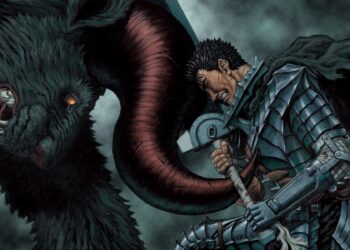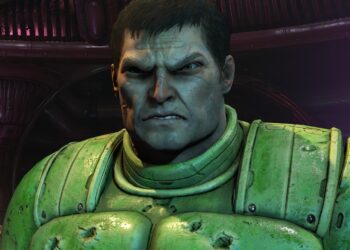Ah, Rocky Balboa. The name brings images of raw meat and harsh training. It represents a spirit strong enough to energize a city. But how much of this cinematic figure is grounded in the boxing world? Surprisingly, quite a bit exists alongside the fiction. Let’s step into the ring and explore.
Rocky Balboa: A Fighter from Philadelphia
Rocky Balboa, the Italian Stallion, stands as more than just a character. He is a cultural icon. But is he purely fictional, or do real-life fighters inspire him? The answer is both.
Sparring Partners: Chuck Wepner and Rocky Marciano
Many believe Rocky’s tale arose in isolation. That’s not true. The essence of the original Rocky film links back to a 1975 match with unknown boxer Chuck Wepner facing heavyweight champion Muhammad Ali. Wepner, the ultimate underdog, wasn’t expected to survive round one. Yet he did. This heroic struggle sparked Sylvester Stallone’s creativity. It fostered a tale steeped in grit and resilience.
While Wepner’s match ignited the story, Rocky’s fighting spirit owes much to Rocco Francis “Rocky Marciano” Marchegiano. The name is prominent. Stallone drew inspiration directly from Marciano, known for his relentless fighting style. This reflected in Rocky’s character. The plot may intertwine with Wepner’s story, yet Rocky’s spirit embodies Marciano’s legacy. It’s an effective blend of underdog motivation and heavyweight inspiration.
Rocky’s Skills: More Heart than Technique?
Rocky Balboa isn’t Sugar Ray Robinson in the ring. In fact, traditional boxing experts would have a different view. His technique isn’t polished or refined. But this is intentional and vital to his persona. Rocky is a brawler who endures punishment. He represents sheer determination and everyman qualities. Most of us share his resilience, standing tall despite life’s heavy blows.
This doesn’t mean Rocky lacks boxing skills. His signature move is an unconventional left hook. Imagine him launching this hook while shifting his back foot forward. It seems wild, yet it’s a strategic marvel. This approach let him close gaps quickly and pressure opponents relentlessly. From a crouched stance, Rocky’s hooks caught opponents off guard, messy yet effective.
Facing Giants: Rocky’s Notable Opponents
Rocky’s rise would lack magic without formidable adversaries. First was Apollo Creed. Creed embodies Muhammad Ali’s charisma and boxing intellect. As heavyweight champion during their first fight, he appears leagues above our Philly underdog. Experts viewed Creed as the obvious choice against Rocky, a dynamic aristocrat against a street brawler.
Then comes Ivan Drago from Rocky IV. Drago is an exaggerated super-human force. His punches reportedly land with tremendous power – 1,850 pounds per square inch. Realistically, faced with that force, Rocky wouldn’t just fall; he’d face grave danger. Drago represents cinematic exaggeration created for heightened drama, reinforcing Cold War tensions.
Most realistically portrayed combat occurs in Rocky Balboa (2006). Here, Rocky battles Mason “The Line” Dixon. Dixon reflects modern boxing dynamics. This fight appears raw and intense, contrasting with other operatic duels and showcasing an aging fighter’s brutal return to the ring.
Fiction Meets Reality: Blending Bluster and Believability
The Rocky films balance between fantasy and real-world boxing elements. They aren’t documentaries but embrace entertaining exaggerations. Yet efforts exist to anchor them in boxing authenticity. In Rocky Balboa, Stallone opted for less scripted fights and incorporated real punches with co-star Antonio Tarver, enhancing realism and making it feel more impactful than previous installments.
However, Rocky’s capacity for resilience borders on fiction. He’s depicted absorbing punishment that would incapacitate anyone else. While cinematic drama thrives on such extremes, it’s crucial to remember this isn’t reality. Ultimately, Rocky symbolizes the indomitable human spirit, offering inspiration rather than a scientifically accurate portrayal of boxing conditions.
Sylvester Stallone: The Engine Behind Boxing’s Cinematic Icon
Sylvester Stallone isn’t merely Rocky’s face; he’s an architect who fueled the franchise’s growth. However, how deep is his boxing passion? Is it sincere or simply for the camera?
Stallone: From Nothing to Boxing Legend
Interestingly, Stallone lacked any pre-existing boxing experience before working on Rocky. He practically learned on the job through extensive training for the role. He compensated for the absence of formal skills with unwavering devotion and sharp choreography insights.
His spark originated from witnessing the 1975 Ali versus Wepner fight firsthand. This event transformed Stallone’s perspective and inspired the Rocky story. Years later, Stallone met Ali backstage before Ali’s fight against Earnie Shavers. This highlights how that inspirational moment came full circle for him.
To prepare for his role, Stallone sparred with actual boxers, legends such as Muhammad Ali and Joe Frazier among them. This approach embodied method acting, blending authenticity with practical preparation for his character.
Stallone’s connection to boxing runs deep. His approach involved living the boxing life, capturing the essence of a fighter. Training with Ali and Frazier showcased the level of commitment and authenticity in his work.
Hall of Fame Recognition: Beyond the Silver Screen
Stallone’s impact on boxing extends far beyond Rocky. In 2010, the International Boxing Hall of Fame inducted him as a “non-participant.” This was to honor his role in popularizing boxing via the films. Rocky brought boxing to new fans, inspiring many who had never seen real fights. Through his work, Stallone became a sports ambassador, linking the ring and cinema. A Hall of Fame acknowledgment? Truly deserved.
Battle Scars: Real Injuries in the Fictional Ring
The Rocky series is known for its raw realism. This realism sometimes crossed into real life. During Rocky IV, Dolph Lundgren accidentally injured Stallone on set. Lundgren, caught up in the moment, landed a powerful blow in a fight scene. The punch sent Stallone to the hospital. He spent four days in intensive care. This served as a reminder of the risks when actors perform fight scenes. Even choreographed fights can lead to injury and hospital visits.
Stallone vs. Tyson: A Cinematic Match That Never Was (and Almost Was)
Imagine if Mike Tyson had appeared in a Rocky movie. That would have been incredible. However, Stallone reportedly refused to collaborate with him on Rocky Balboa, saying, “Keep that son of a b***h out of the ring.” The reasons are unclear. It could be creative differences or personal issues. Regardless, Stallone decided against a confrontation between Rocky and Tyson, leading to a missed cinematic opportunity.
Beyond Rocky: Apollo, Adonis, and the Quest for Realism
The Rocky series introduced characters like Apollo and Adonis Creed. But are these figures drawn from reality? Did the franchise keep its balance of fiction and realism?
Apollo Creed: Channeling the Spirit of Jack Johnson
Apollo Creed exemplifies more than mere fiction. Stallone confirmed the character took inspiration from Jack Johnson, the first African American heavyweight champion. Johnson showcased talent, charisma, and defied racial challenges. Creed mirrors that spirit, exuding confidence and charm in the ring. Johnson broke barriers; Creed embodied that same defiance.
Adonis Creed: A New Generation Rooted in Legacy
Adonis Creed connects old and new traditions. Inspired by both Rocky and Apollo, he carries Apollo’s name and legacy. He learns from Rocky, inheriting both wisdom and fighting spirit. Adonis symbolizes a fresh generation honoring his father’s history and Rocky’s spirit. He battles shadows from the past while forging his own identity.
Fight Realism Revisited: Rocky Balboa and the Pursuit of Authenticity
Rocky Balboa (2006) features the most authentic fight scenes in the series. The choreography focused on real impacts rather than scripts. Including Antonio Tarver, a real boxer, added to the film’s authenticity. This installment depicted an aging Rocky’s return to fighting. It provided a raw feel compared to earlier flashy sequences, balancing cinematic spectacle with real boxing.
Mike Tyson and the Rockyverse: A Fan, a Fighter, and a Missed Opportunity
Mike Tyson, an explosive boxer, contrasts with Rocky Balboa’s underdog persona. How did Tyson view the Rocky phenomenon? How close was he to joining this universe?
Tyson’s Take: A Fan in the Corner
Surprisingly, Mike Tyson admired Rocky Balboa. He saw parts of his own journey mirrored in Rocky’s story. Even brutal figures can appreciate an underdog tale on screen.
Tyson vs. Rocky: A Hypothetical Heavyweight Clash
Comparing Tyson and Rocky is like contrasting a storm with a determined fighter who lacks technical finesse. Tyson dominated with strength and speed during his prime. In contrast, Rocky relied on resilience rather than sheer knockout power. Tyson’s strength would likely outmatch Rocky in a real fight due to his size and offense.
The Rocky Balboa Role That Wasn’t: Tyson’s Near Miss
As mentioned earlier, Stallone declined to work with Tyson for Rocky Balboa. Thus, Tyson’s potential involvement in the film never occurred. Imagine him as a fierce rival or coach. Such a scenario remains a missed chance. Stallone might have believed Tyson would overshadow the storyline.
Unrelated Rings, Mutual Respect: Tyson and Stallone’s Parallel Paths
Despite never sharing a screen or ring, Tyson and Stallone show mutual respect. From different backgrounds, they both achieved legendary status within their realms. Their paths connect at the intersection of fighting and entertainment, showcasing each one’s influence on boxing.
Ali vs. Tyson: Eras Apart, Legends United in Legacy
It’s crucial to note that Ali and Tyson never faced each other in the ring. They belonged to separate boxing eras. Ali ruled in the 60s and 70s, while Tyson’s reign occurred in the 80s and 90s. Their hypothetical match belongs to fantasy. However, both remain icons whose legacies influence future generations.
The Fictional Fabric: Characters Born of Imagination
The Rocky universe consists largely of fictional narratives. Let’s clarify which elements are strictly figments of imagination.
Adonis and Apollo Creed: Fictional Lineage, Real Impact
Adonis Creed is purely fictional. He emerged from the Creed films, portrayed by Michael B. Jordan. The character extends Rocky‘s legacy generationally. Apollo Creed, while inspired by Johnson, remains fictional too. Carl Weathers immortalized him with notable performances, shaping his persona in film for audiences worldwide.
Flair exists, but he doesn’t represent a specific boxer. These characters are fictional, yet they resonate. They touch on ambition, rivalry, and legacy.
Rocky’s Record: Wins, Losses, and Cinematic License
Rocky Balboa’s boxing record mixes fact with fiction. By 1975 in the films, Rocky’s record shows 43 wins (40 by knockout) and 21 losses. This shows he’s a seasoned fighter, but not a world champion. In Rocky, he loses to Apollo Creed in the first film, Clubber Lang in Rocky III, and Mason Dixon in Rocky Balboa. These losses shape his character. Rocky isn’t defined by invincibility. He’s defined by resilience. His ability to rise after failure matters. Losses matter as much as wins in building his legend.
Apollo Creed’s Demise: A Dramatic Catalyst, Not Real-Life Tragedy
Apollo Creed’s death in Rocky IV is a key plot point. He dies brutally at the hands of Ivan Drago, starting Rocky’s quest for revenge. This death drives the plot and raises the stakes. It reflects a narrative device rather than a real tragedy in boxing. It pushes Rocky’s emotional journey forward, linking to the film’s Cold War themes.
Key Inspirations: The Real-World Seeds of Rocky’s Story
We return to the core inspirations behind Rocky Balboa and the first film.
Chuck Wepner, Rocky Marciano, and the Genesis of a Legend
The story of the first Rocky film partly comes from Chuck Wepner’s fight with Muhammad Ali in 1975. This underdog story conveys the will to survive against great odds. It forms Rocky’s emotional essence. However, Rocky’s name, fighting style, and persona derive heavily from Rocky Marciano. Marciano’s relentless fighting and durability helped shape the character.
Rocky Balboa is a unique synthesis. He embodies Chuck Wepner’s spirit, combined with Rocky Marciano’s fighting style. Sylvester Stallone’s vision ties it all together. This shows how real events can inspire fiction, creating storytelling that resonates.
Sylvester Stallone: Beyond the Ring, Personal Battles and Background
Sylvester Stallone’s story adds depth to themes of struggle. Let’s examine aspects of his life that illuminate his creative work.
No Military Service, But a Draft Dodger with a Twist
Despite portraying action heroes, Sylvester Stallone never served. His case isn’t typical draft dodging. In 1969, Stallone qualified for the draft, but partial facial paralysis made him ineligible. His birth complications led to removal from the draft. Stallone’s journey took him to Hollywood instead of the military. This adds layers to his public persona linked to hyper-masculinity.
Italian Heritage: A Rooted Identity
Stallone’s Italian roots play a crucial role in his identity and inform Rocky Balboa’s character. His father immigrated from Gioia del Colle to the U.S. in the 1930s. This immigrant background shapes the American Dream themes and ties to the working-class setting of Rocky. Rocky is not just an Italian Stallion; he represents Italian-American values such as grit and family.
Tragedy and Loss: The Passing of Sage Stallone
Life holds tragedies, even for heroes. Stallone faced profound personal loss when his son, Sage Stallone, died in 2012. Atherosclerosis caused Sage’s heart disease at age 36, not a drug overdose, as rumored. This tragedy adds depth to Stallone’s life story. It shows even those who portray resilience have real-world heartaches. It humanizes the action hero, presenting the man behind the myth.
In conclusion, Rocky Balboa blends real-world inspiration with cinematic artistry. It draws from boxing legends and Stallone’s experiences. Ultimately, it becomes unique—a powerful story of human resilience within the boxing ring’s drama. That might be the knockout punch of the Rocky saga.










